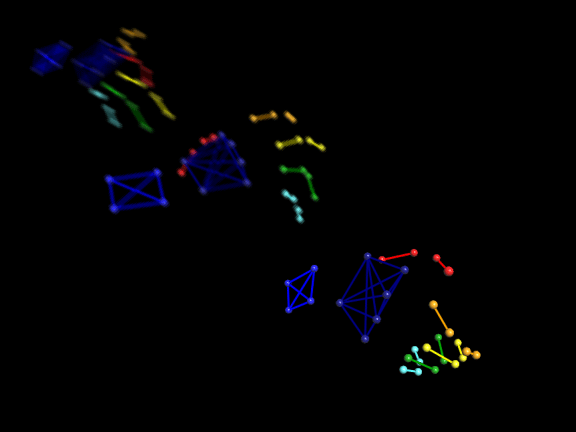Dimensionality reduction in the cortico-muscular system controlling the hand
Although the hand has 16 joints that provide 23 degrees-of-freedom (DOFs), in most hand movements these joints/DOFs do not move independently. Because multiple joints move together, such as the bending of all three joints of a finger at the same time, descriptive analysis can reduce most of the hand's motion to far less than 23 DOFs. But does the nervous system actually make use of such reduced dimensionality in controlling real hand movements?
Abstract:
After stroke, spinal cord injury or other injury producing paralysis, as well as following upper extremity amputation, loss of dexterous hand function poses a major impediment in performing both skilled tasks and routine activities of daily living. Prosthetic devices that interface with the nervous system (neuroprosthetics) therefore are being developed to allow such patients to control dexterous, artificial hands. The requisite computational load can be handled by collections of modern laboratory-based computers, but may rapidly exceed the capacity of more limited, on-board computer systems. Dimensionality reduction, if normally used by the cortico-muscular system controlling the hand, could provide a means of minimizing the on-line computational load that will be carried by on-board computers controlling neuroprosthetic extremities with dexterous hands. Understanding how such dimensionality reduction normally is used by the neuro-muscular system would accelerate the application of neural and muscular decoding techniques for control of dexterous, neuroprosthetic hands.
The present project will test the general hypothesis that normal cortico-muscular control of the hand and fingers makes use of dimensionality reduction. Reducing dimensions in neuronal, muscular and kinematic data, all recorded simultaneously, will take the novel, comprehensive, and therefore necessarily ambitious approach of comparing the correspondence between reduced spaces at three different levels. Accomplishing this goal will entail interdisciplinary collaboration between motor systems physiologists and biomedical engineers.
Data will be acquired simultaneously from 128 single-neuron microelectrodes implanted in the primary motor cortex hand representation, from 16 electromyography electrodes implanted in various muscles that move the fingers and wrist, and from 23 markers tracking finger kinematics, all during grasping movements of 16 to 48 different objects. Correlation, decoding and sensitivity analyses, each cross-validated on grasp data not used to perform dimensionality reduction or to train models, will be applied to test the specific hypotheses that:
- the biomechanical structure of particular finger muscles produces principal components of hand and finger kinematics;
- time-varying muscle synergies correspond to principal components of hand and finger kinematics;
- time-varying neuron synergies represent principal components of hand and finger kinematics; and
- time-varying neuron synergies represent time-varying muscle synergies.

As the hand closes around an object, the 12 joints of the four fingers all tend to flex in parallel.
Researcher: Marc H. Schieber, M.D., Ph.D.
Neural Control of Individuated Finger Movements
